# A tibble: 8,345 × 18
ID Language_ID Parameter_ID Value Code_ID Comment Source codeReference
<chr> <chr> <chr> <chr> <chr> <chr> <chr> <lgl>
1 kolp1236… kolp1236 aes 3 aes-sh… Kol (1… hh:he… NA
2 tana1288… tana1288 aes 3 aes-sh… Tanahm… hh:he… NA
3 touo1238… touo1238 aes 3 aes-sh… Touo (… hh:he… NA
4 bert1248… bert1248 aes 3 aes-sh… Fadash… hh:he… NA
5 sius1254… sius1254 aes 6 aes-ex… Siusla… hh:he… NA
6 cent2045… cent2045 aes 6 aes-ex… Jalaa … <NA> NA
7 else1239… else1239 aes 3 aes-sh… Elseng… hh:he… NA
8 taia1239… taia1239 aes 4 aes-mo… Taiap … hh:he… NA
9 pyuu1245… pyuu1245 aes 3 aes-sh… Pyu (4… hh:he… NA
10 mato1253… mato1253 aes 6 aes-ex… Arára … hh:he… NA
# ℹ 8,335 more rows
# ℹ 10 more variables: status <fct>, Name <chr>, Macroarea <chr>,
# Latitude <dbl>, Longitude <dbl>, Glottocode <chr>, ISO639P3code <chr>,
# Countries <chr>, Family_ID <chr>, Language_ID.y <chr>Data Analysis for LEL - Week 4
Data viz
University of Edinburgh
Good data visualisation
Alberto Cairo has identified four common features of good data visualisation (Spiegelhalter 2019:64–66):
It contains reliable information.
The design has been chosen so that relevant patterns become noticeable.
It is presented in an attractive manner, but appearance should not get in the way of honesty, clarity and depth.
When appropriate, it is organized in a way that enables some exploration.
Endangerment status
Information is (not) reliable
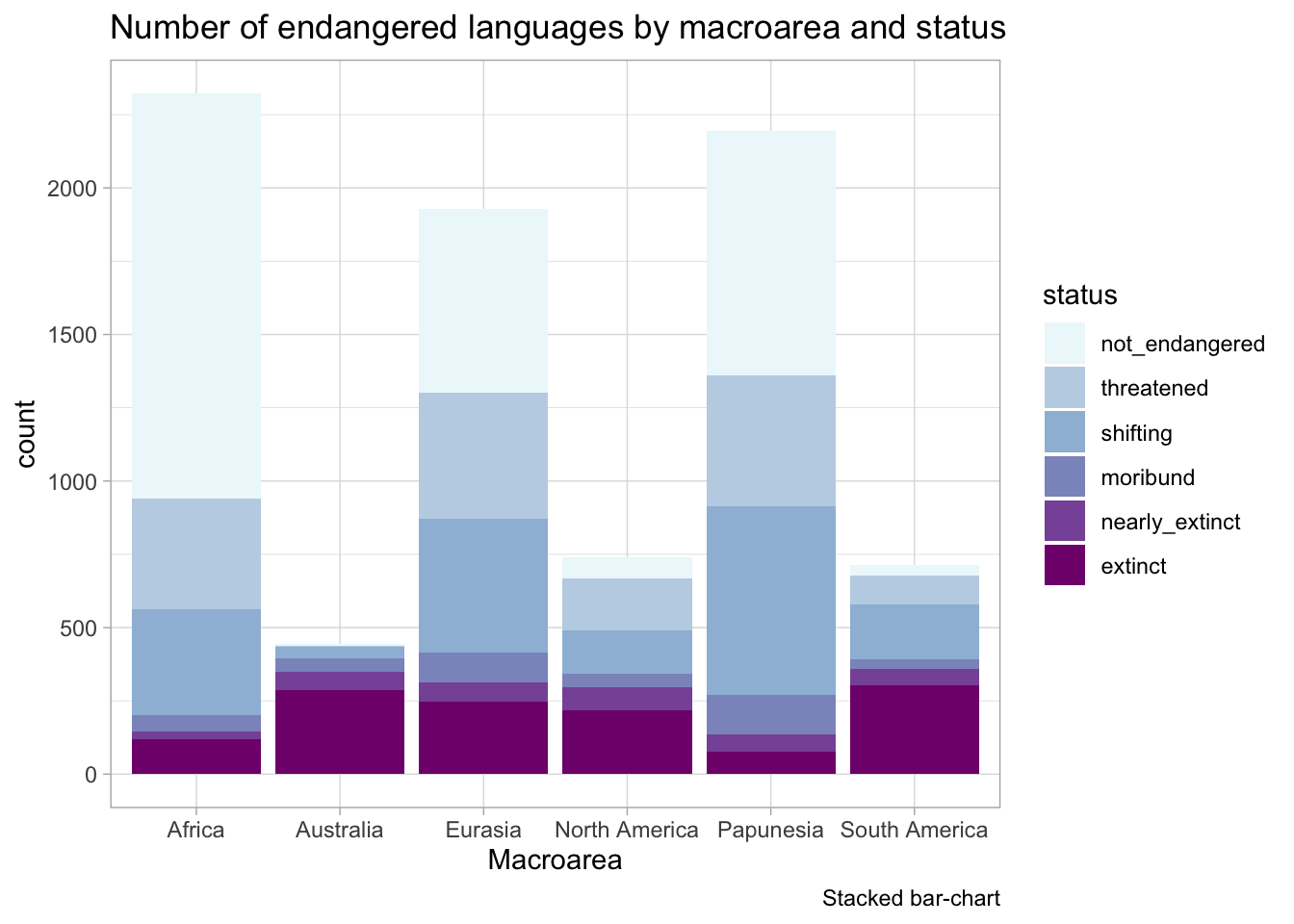
Information is reliable
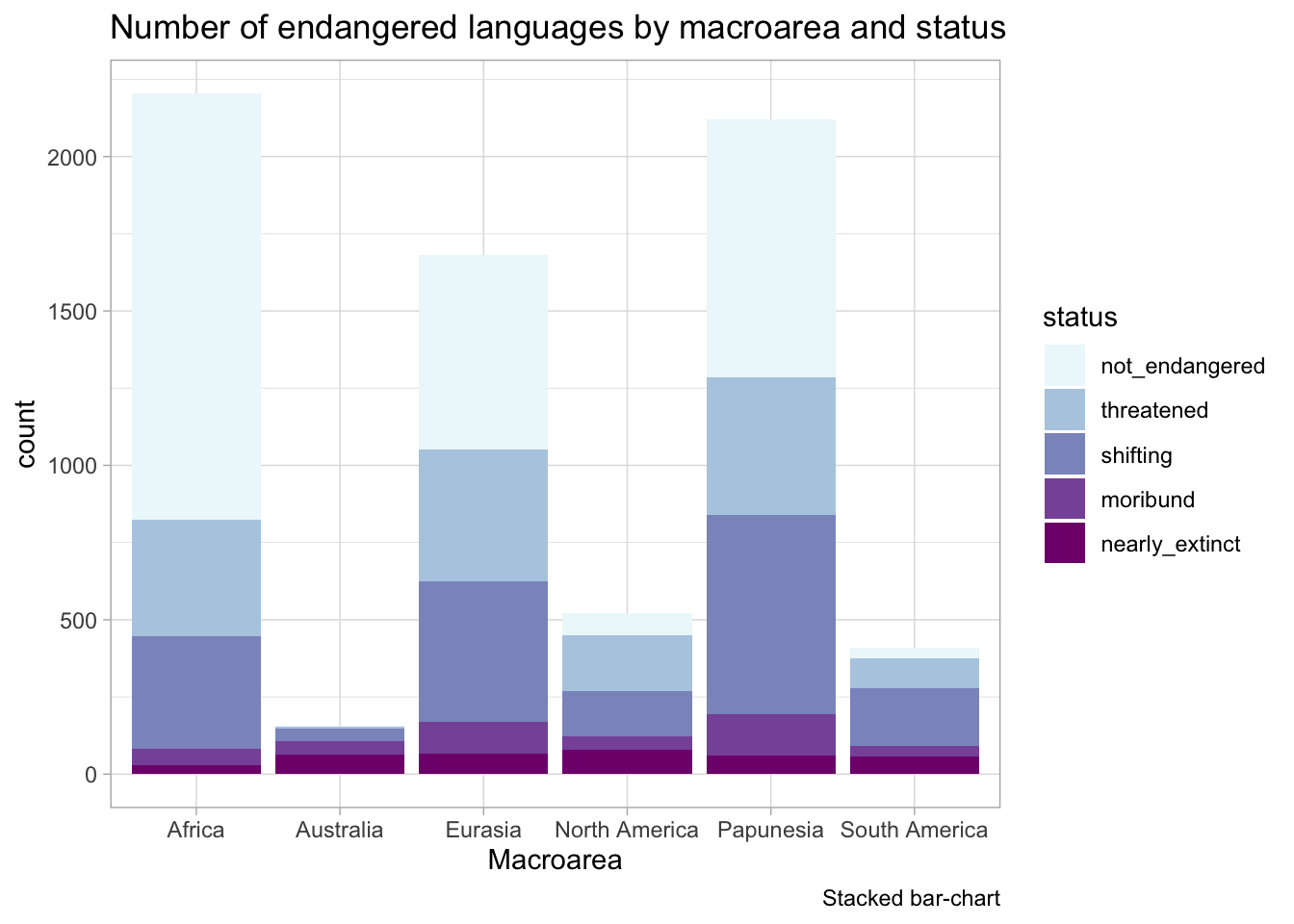
Patterns are (not) noticeable
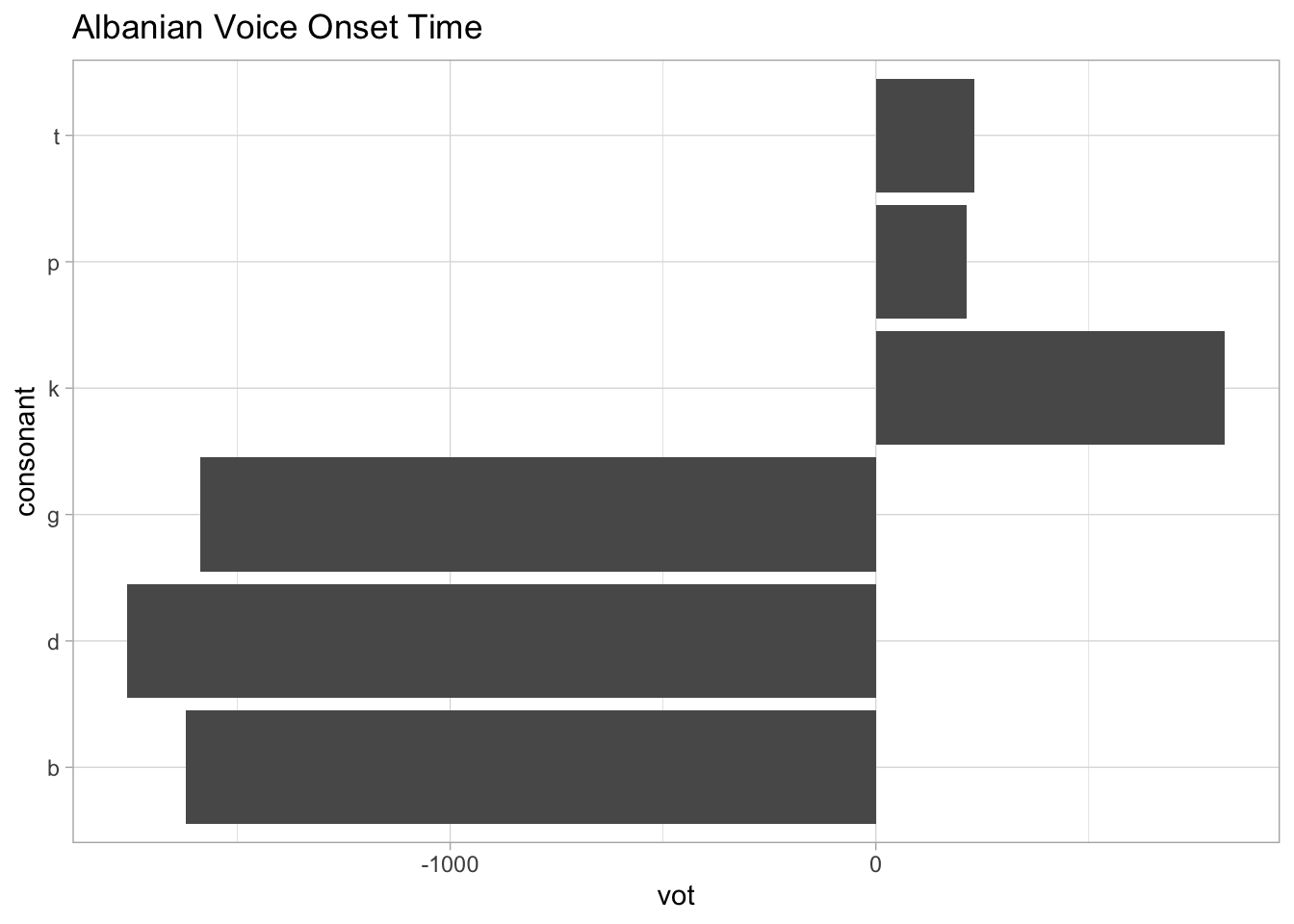
Patterns are noticeable
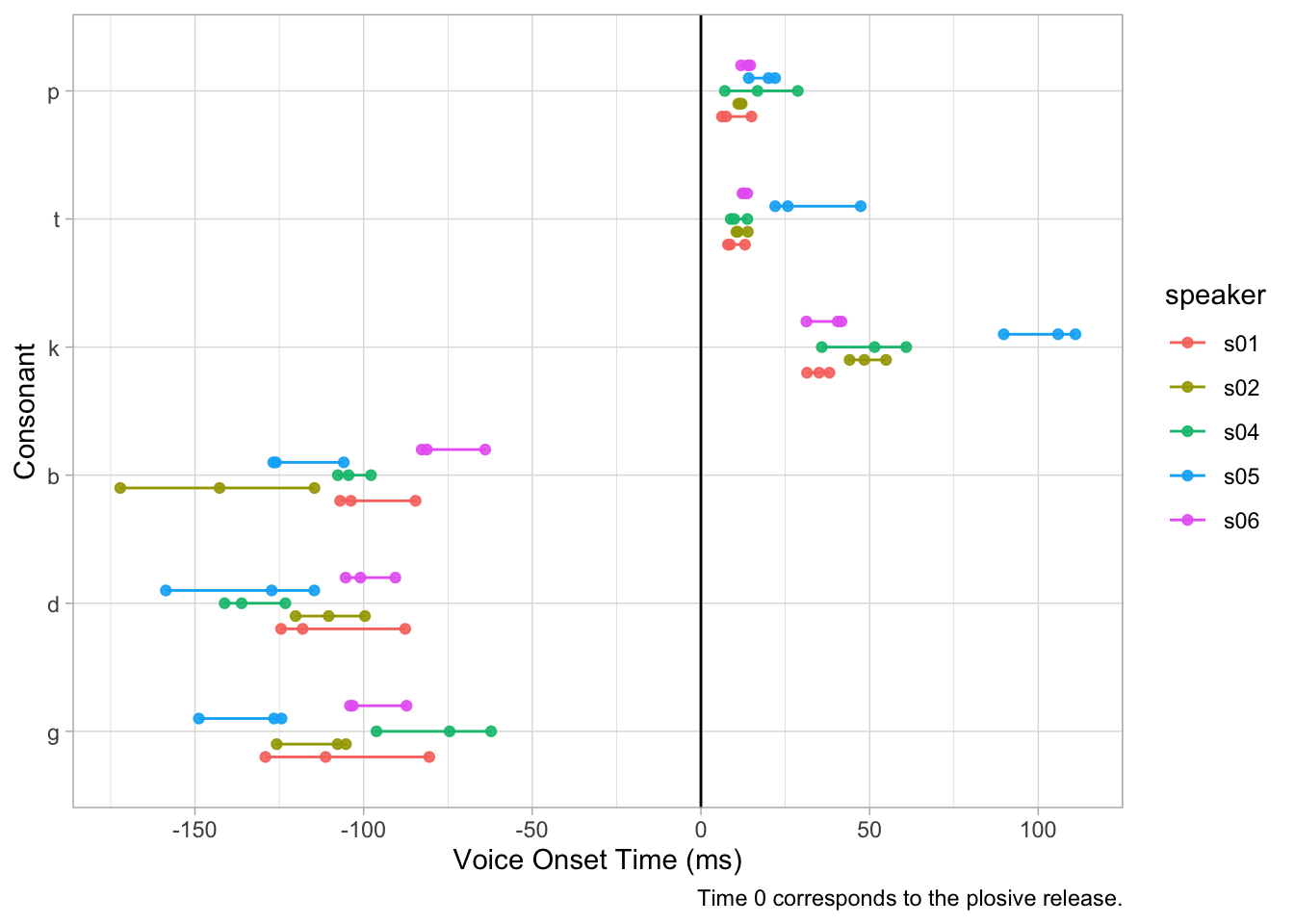
Aesthetics (should not) get in the way
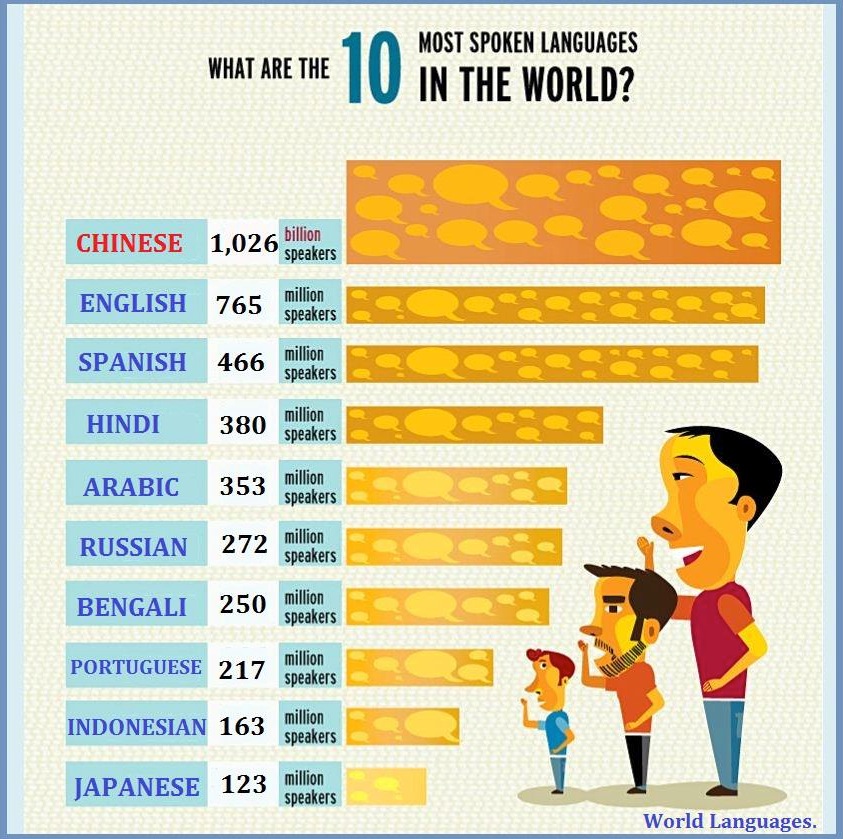
Image source. See more examples on Ugly Charts.
(Does not) enable exploration

Enables exploration
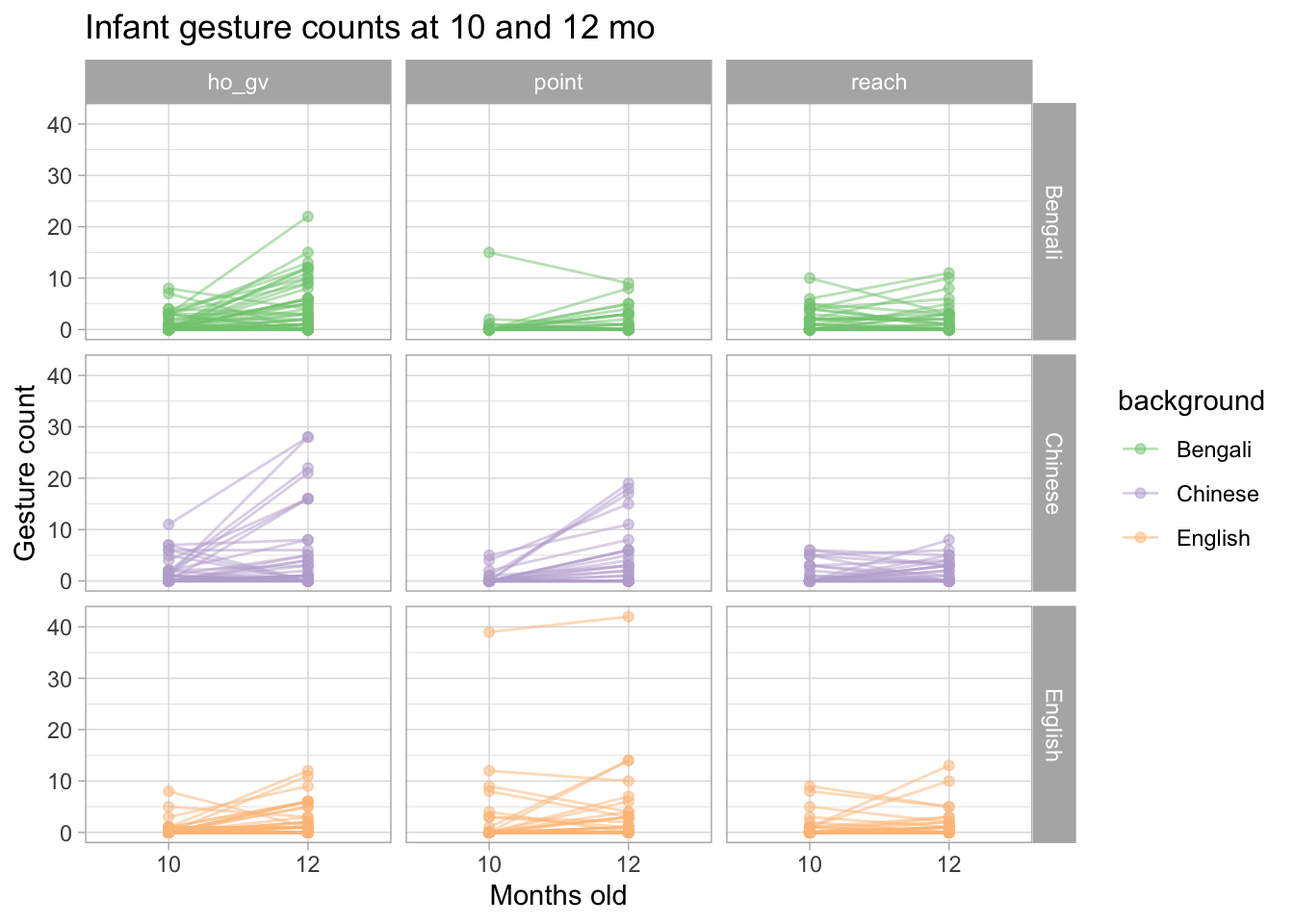
Practical tips
Show raw data (e.g. individual observations, participants, items…).
Separate data in different panels as needed.
Use simple but informative labels for axes, panels, etc…
Use colour as a visual aid, not just for aesthetics.
Reuse labels, colours, shapes throughout different plots to indicate the same thing.
Activity
Form small groups and discuss:
Go to Ugly Charts, pick a couple charts to discuss.
Discuss the plots in a couple recent papers you have read.